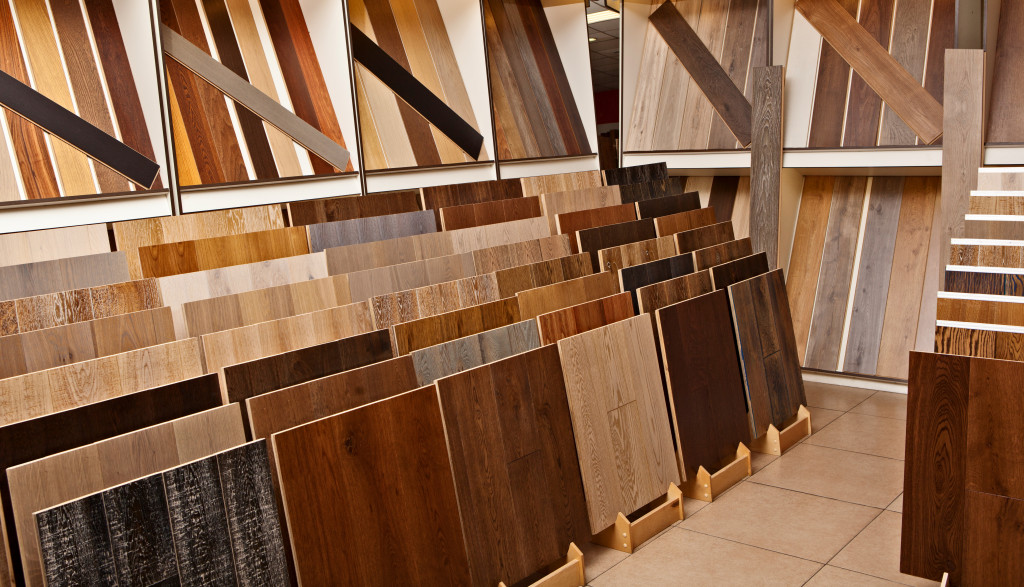Disclaimer: This website provides health information for educational purposes only and is not a substitute for professional medical advice, diagnosis, or treatment. Always seek the guidance of a qualified healthcare provider with any questions you may have.
A new type of flooring is gradually dominating the market for the right reason: sustainable flooring. Its success hinges on the fact that more people are becoming aware of the threat of climate change and the pressing need for products that are both functional and helpful to the environment.
What Is Sustainable Flooring?
Sustainable flooring is flooring manufactured using green technology. Therefore, it has a smaller environmental footprint than traditional flooring. The green manufacturing process does not use any harsh chemicals, dyes, or finishes. It also ensures that the particleboard and plywood used in flooring come from sustainable forests.
How Is Sustainable Flooring Manufactured?
When applied to wood production, the word sustainability means using materials from trees grown in a way that causes them to thrive and grow back again naturally (with minimal human interaction). This ensures a constant supply of raw materials. To yield large quantities of flooring boards, the number of trees harvested must exceed the number of trees planted. The most sustainable type of forest management model is responsible forestry.
Forestry is an essential part of every community, and it has evolved with changing demand for lumber and environmental conditions. A sustainable approach is to replant trees after they are harvested, so more can be harvested in the future. Responsible forestry seeks to preserve the health of forests with minimal impact on the surrounding environment and local community.
Responsible forestry involves planting new trees based on how many need to be cut, which helps meet the demand for wood while ensuring no negative impact on the surrounding environment.
Sustainable flooring manufacturers and contract flooring teams work with suppliers who follow responsible forestry guidelines to ensure that their products are not sourced from illegally harvested trees or trees harvested in a way that harms the surrounding habitat.
Sustainable flooring also introduces green methods to produce more sustainable-friendly materials:
- Bamboo – Bamboo is considered a green alternative to hardwood and tile due to its high durability. It’s also 100 percent renewable since it grows in just three years versus the 45-110 years it takes for an average forest to grow.
- Recycled Glass – This flooring has become increasingly popular because of the variety of colors and textures available. It is more cost-effective than bamboo and other types of wood.
- Cork – Cork is a 100 percent renewable material that does not require water or pesticides to grow. It also offers antimicrobial properties, which protect against mold and other allergens.
- Recycled Plastics – This flooring is made from 100 percent recycled plastic. It’s a low-maintenance option that requires no refinishing, just an occasional vacuum or damp mop to remove dust and other debris.
- Hemp – Hemp offers unique color blends and creative designs made from sustainable materials. Hemp is a renewable resource that can be pressed into a variety of products. It is also an excellent insulator and natural mold inhibitor.
Why Is Sustainable Flooring Good for You?

An increasing number of people are concerned about the environmental impact of furniture and flooring choices. A 2019 survey in Pew Research Center revealed that many viewed climate change as a global threat.
This growing environmental awareness has changed how people buy products and influenced companies to make greener choices. According to one study, nine out of 10 Americans believe it’s vital that products are made from recycled materials, while over 70 percent of millennials were willing to pay more for greener products.
The same research found that 97 percent of shoppers preferred recycled content in flooring, while 81 percent favored sustainable harvesting methods that protect the environment and local community.
People want to find green products that support responsible forestry management practices because they care about the health of forests and how harvesting trees affects the natural environment. As humans, we depend on nature for resources such as air and water, so it makes sense that we would want to protect our home: Earth.
Other reasons for the popularity of sustainable flooring include:
- Durability – Many eco-friendly flooring options are as durable as traditional materials but may wear out slightly faster due to the way they’re processed. However, these floors can often be refinished or restored, unlike lesser quality alternatives that need to be replaced after a few years.
- Color and Style – An extensive range of eco-friendly flooring choices is available, so you can find products that fit your style or match existing decor. These products are also available in nearly every common material used for commercial floors, including tile, linoleum, natural stone, and hardwood.
- Better Human Health – Many sustainable flooring materials such as cork and bamboo offer antimicrobial properties. Bamboo also has natural water resistance that helps keep floors dry, even in moist environments typical in bathrooms and kitchens.
- Healthier Indoor Air Quality – Sustainable flooring won’t release hazardous chemicals into your home by wearing out quickly.
Cutting down forests is harmful to the natural environment and harms people since we depend on trees for many resources such as oxygen and shelter.
As people become more aware of the environmental impact of their choices, sustainable flooring options like recycled glass and cork help solve this problem by providing unique color blends and stylish designs that are good for the environment.




